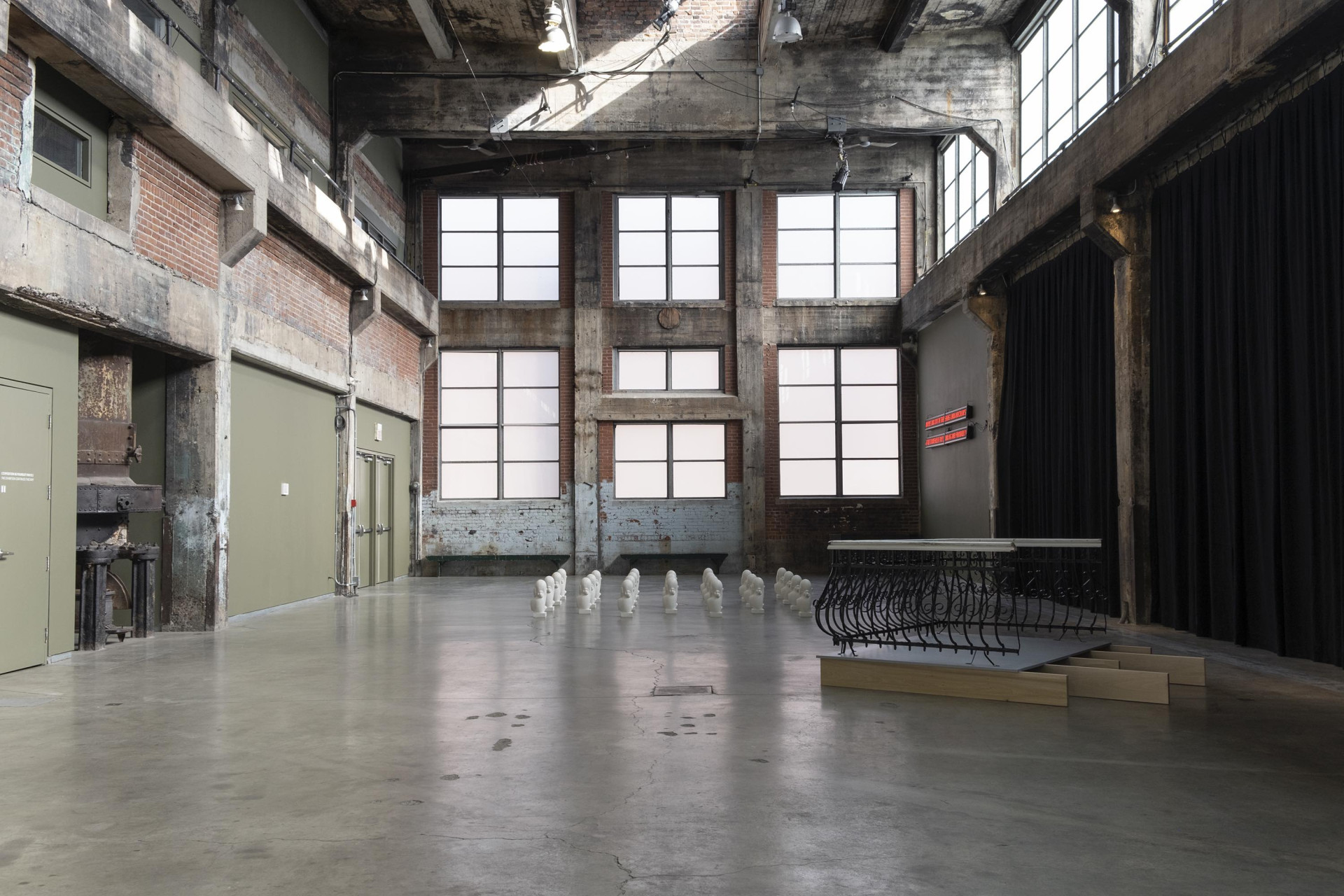
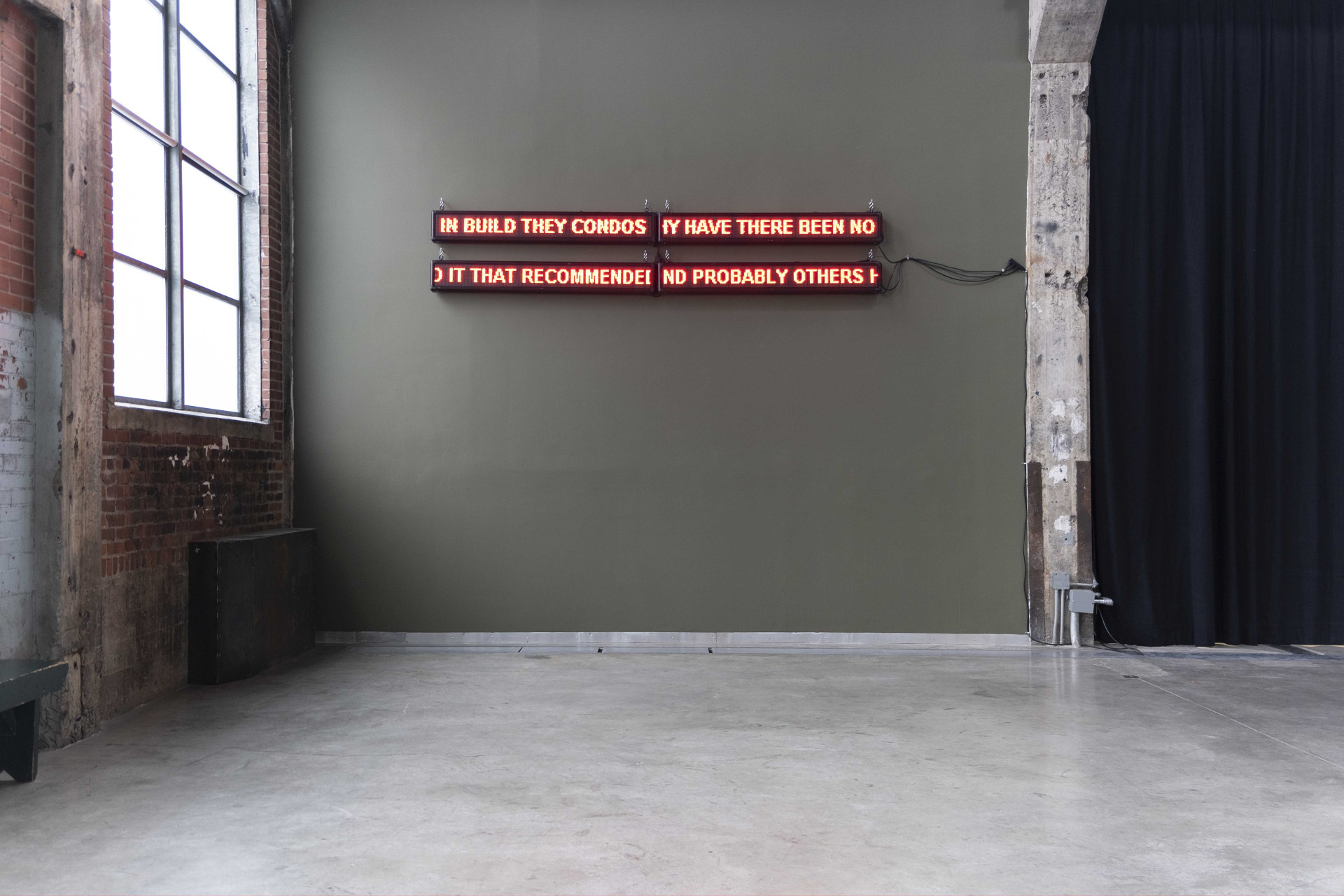
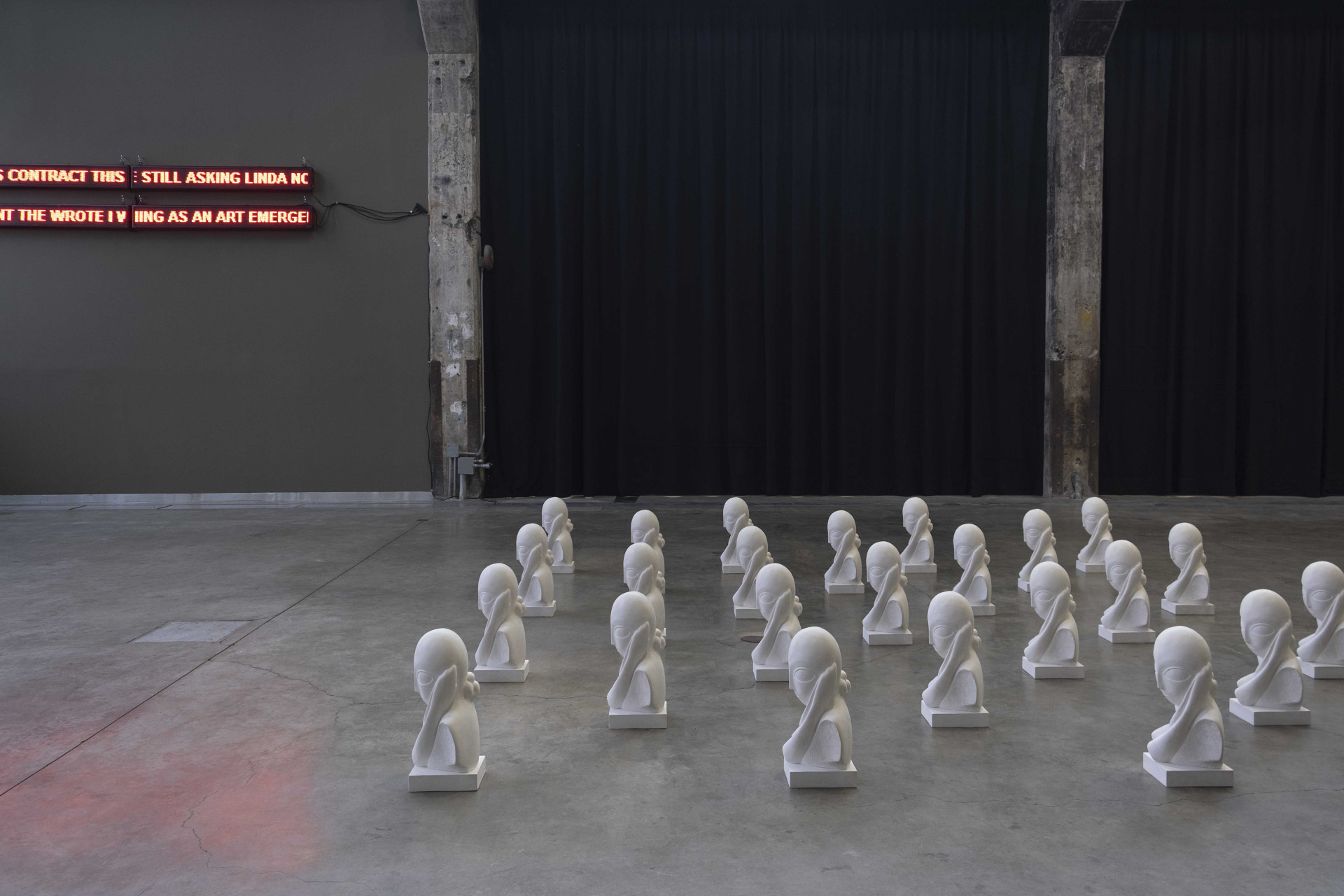
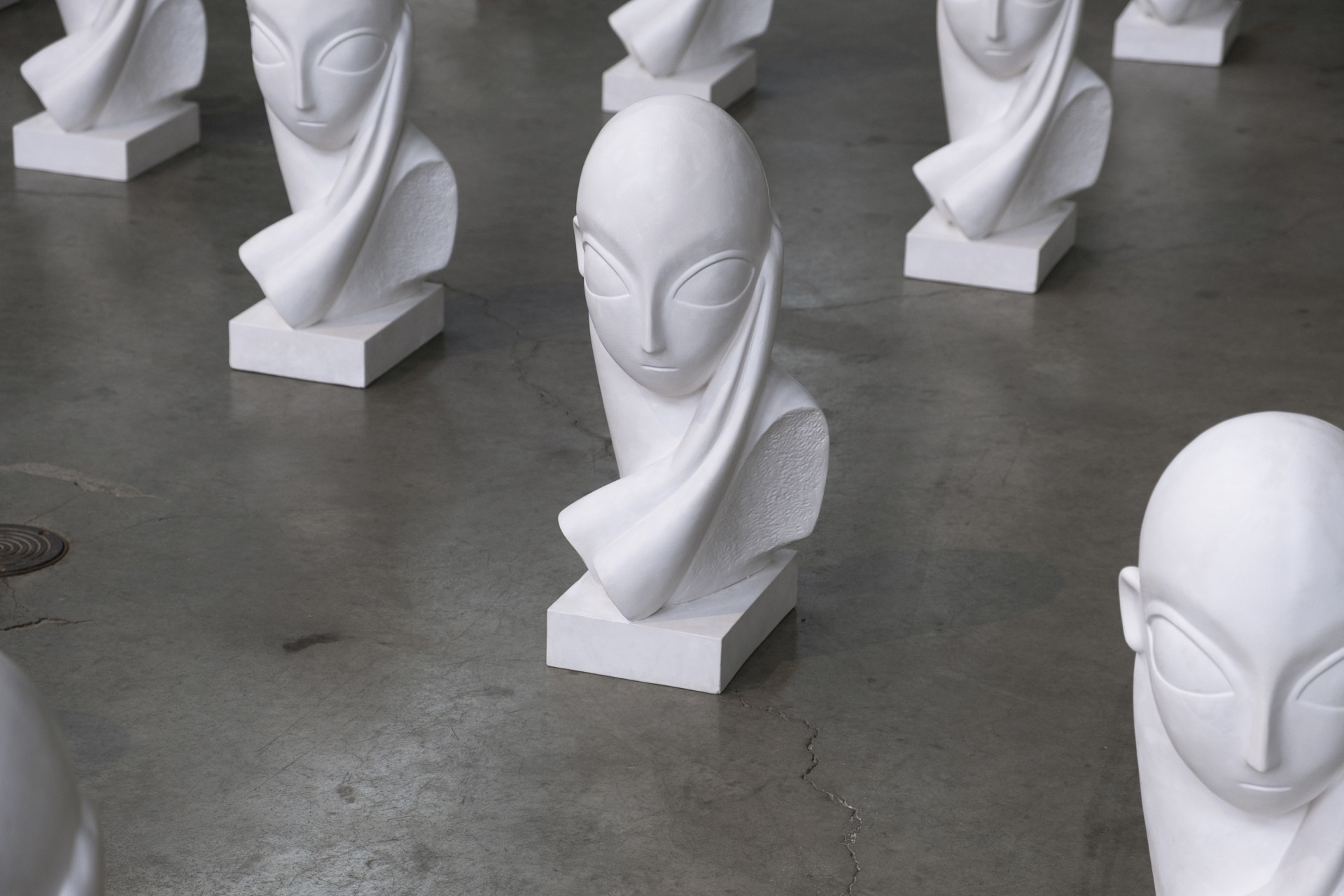
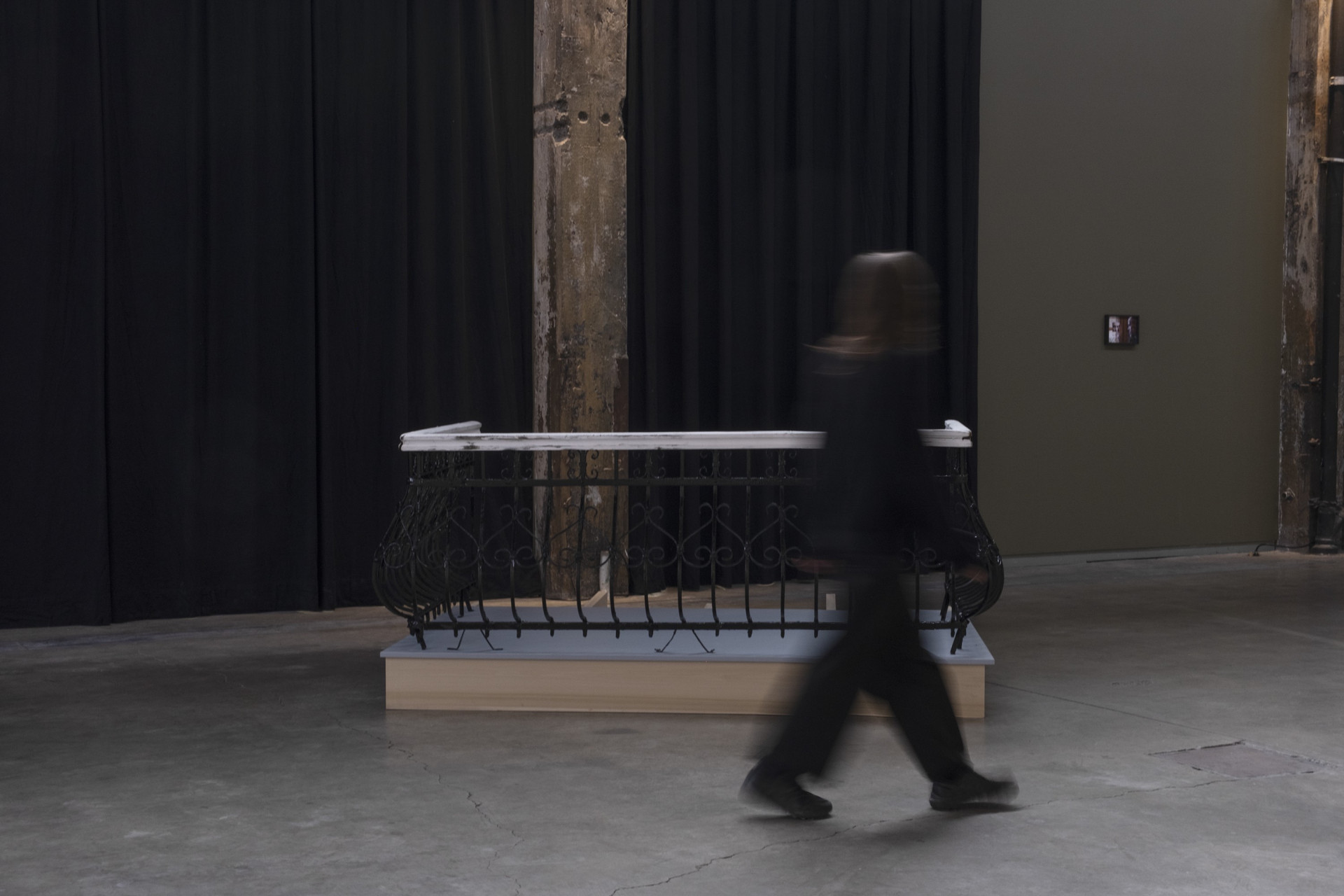
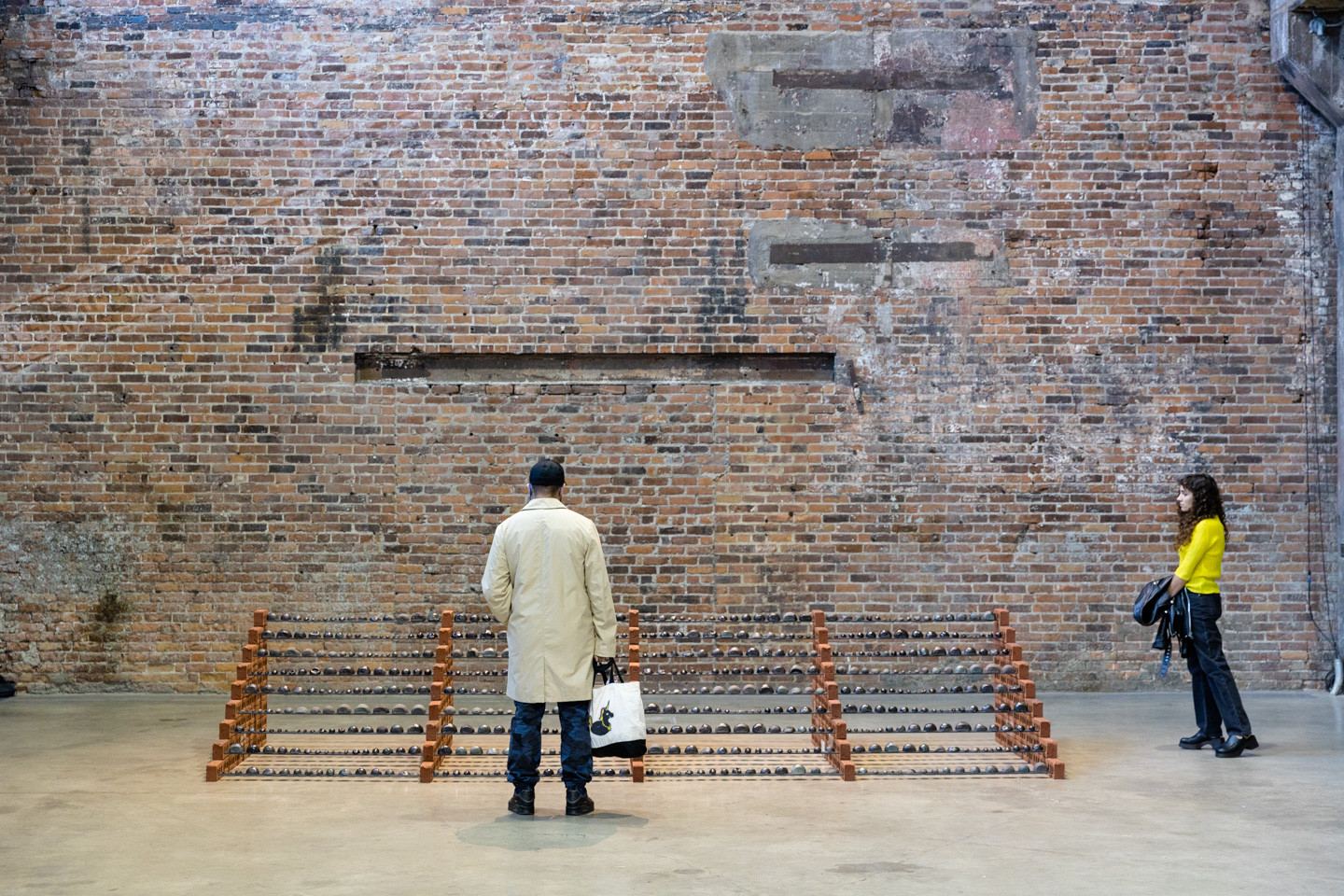
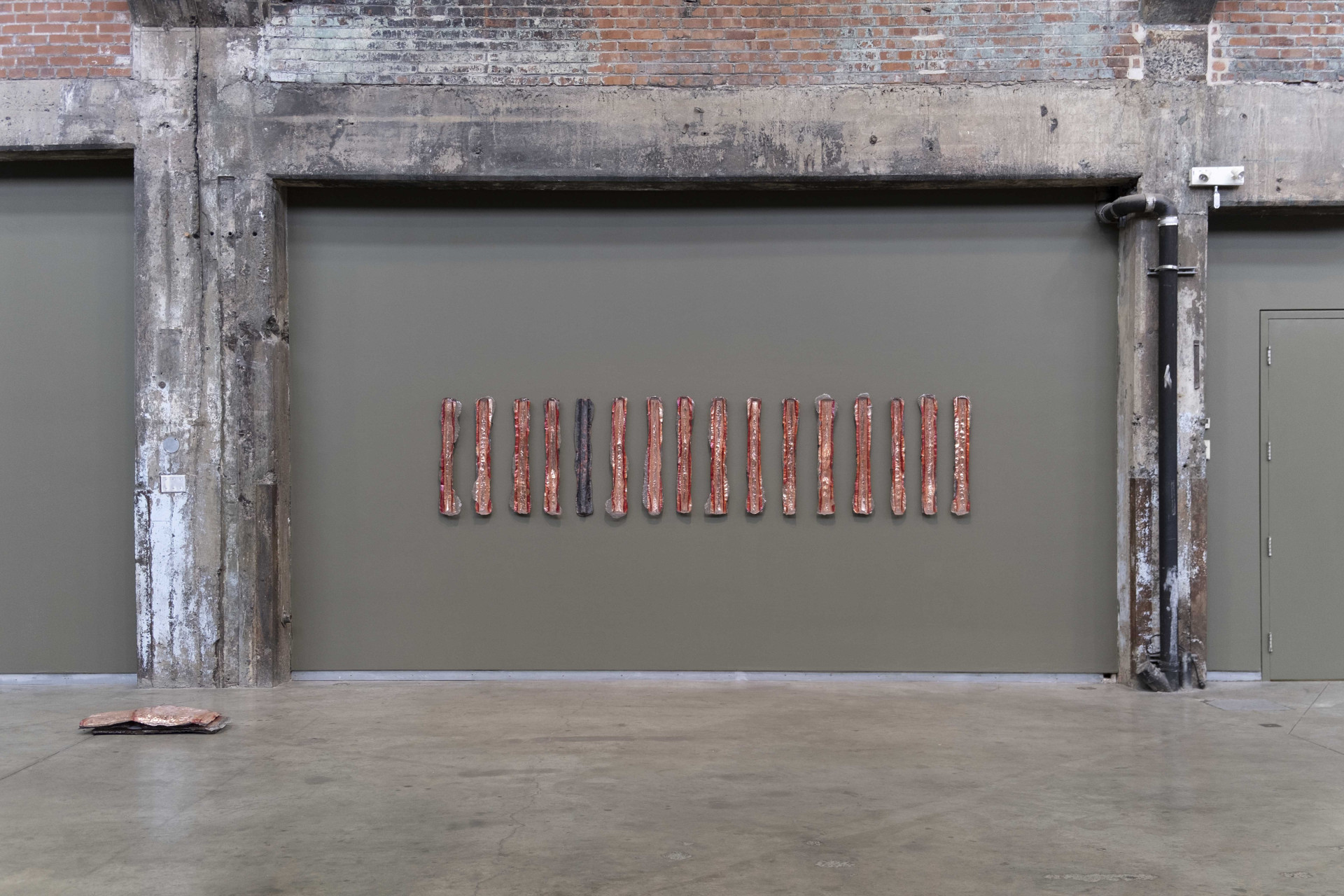

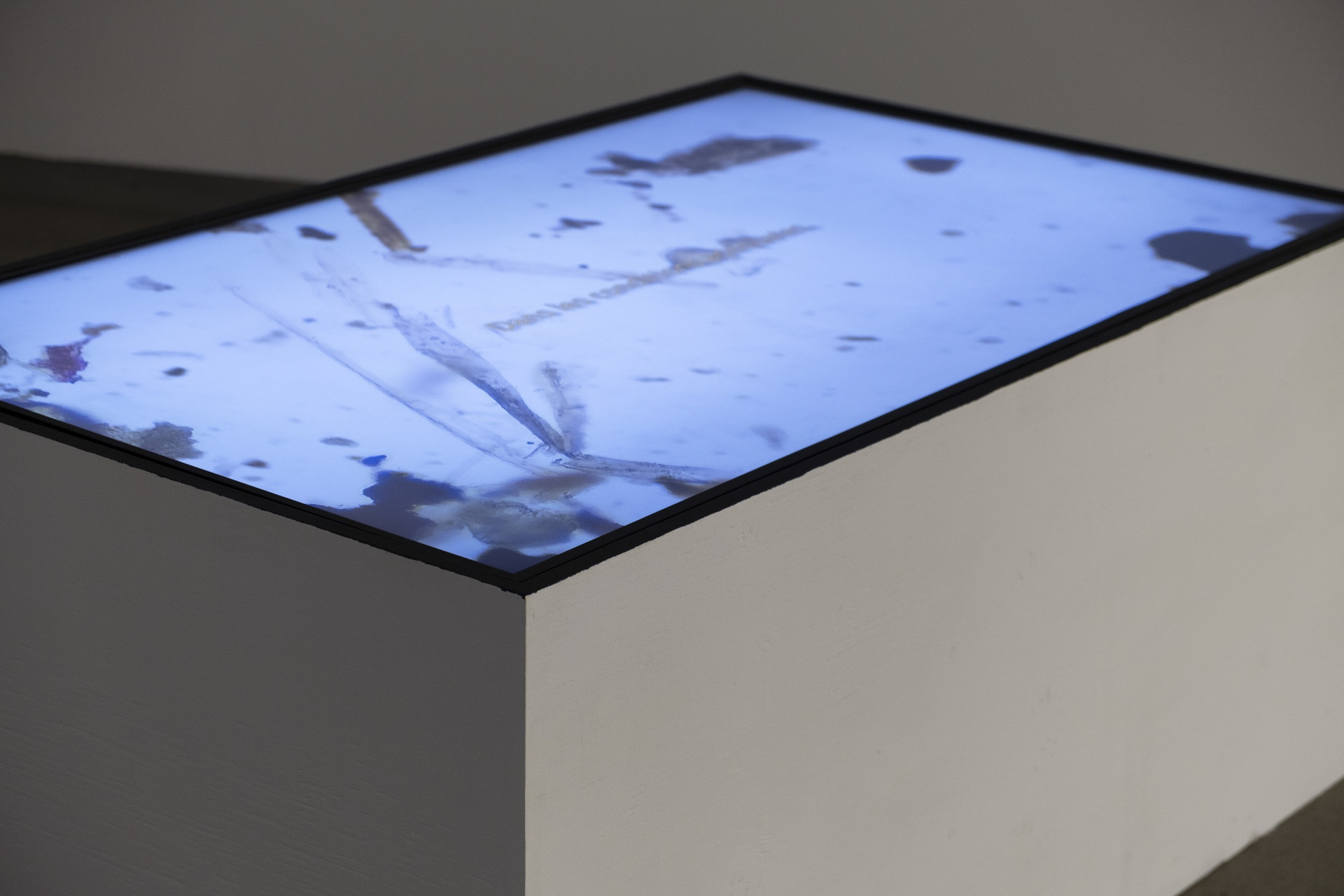
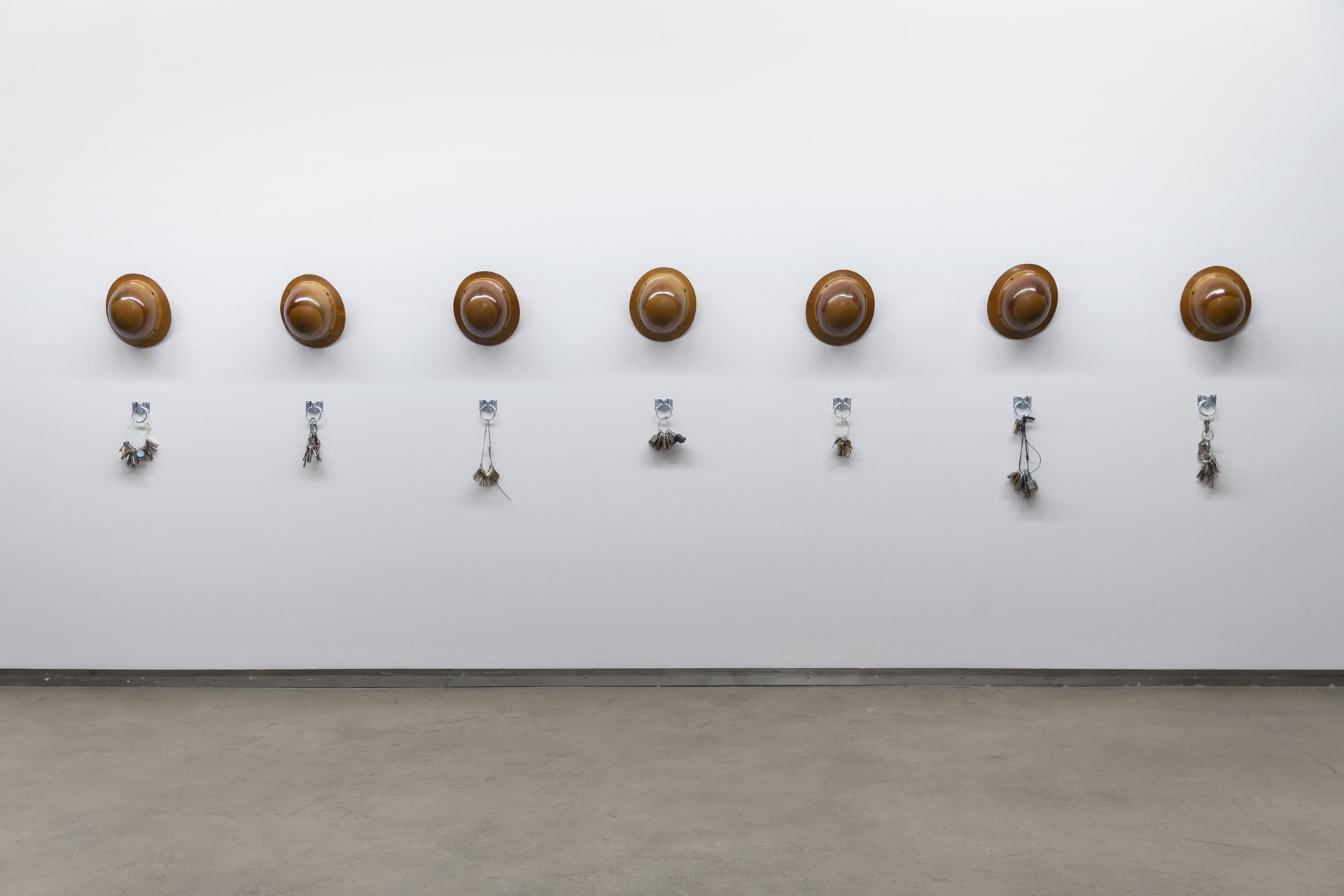


To celebrate its 20th anniversary, Fonderie Darling launches an introspective and ambitious fall program presented in the building’s two exhibition spaces and basement. Exploring the theme of memory, ten artists turn to the annals of Fonderie Darling to create original works in response to its programing history, its collection, its architecture, or its transformation from a metal foundry to a brownfield site to a major centre of contemporary art in the Montreal cultural scene. Tu m’enveloppes et je te contiens [You Envelop Me and I Contain You] highlights artistic gestures that are rooted in practices yet can also be associated with curating practices, such as interpreting, synthesizing, framing, remembering, transforming a space, or exhibiting an object. Excerpted from a declaration of love between two characters in Jean Genet’s play The Balcony, the evocative title of this project osubtly refers to the symbiotic relationship that can exist between the labour of the artist and that of the curator, a complex dynamic that supports them in re-examining the exhibition format.
Revised or faithful reconstructions, reactivations of artworks, and appropriations constitute the interventions serving as anchor points for considering the ways in which the present gets superimposed on the past, leaving a quasi-spectral trace of what has been, of the people that have passed through, and of the events that have taken place there. Though perhaps overlooked by most, the intervention of Christophe Barbeau radically transforms the space by restoring the long black curtains and army green colour to the walls of the Main Hall. The reappearance of this enveloping green takes us back in time and makes us aware of the many layers of paint that accumulate over consecutive exhibitions, turning the space into a constantly updated palimpsest. The architectural tropes of the Main Hall and the image of successive layers of history also inspired the installation of Sameer Farooq, which is composed of approximately seven hundred ceramics in the shape of an onion, a bulb whose petals also unfold in layers like a small archive. Cast one at a time through a slow and meditative process and arranged in rows, the onions encourage a contemplative experience that is consistent with the onion’s undulating form while also recalling a creative process based on time, breath, and contact between body and material.
It is no accident that several artists used the technique of casting in their works: this gesture embodies the idea that material holds memory. It evokes the transformability of material and the metamorphoses permeating the industrial history of Fonderie Darling. Inspired by the site’s past, the sculptures of Alexia Laferté Coutu are based on the old furnace of Darling Brothers Ltd., an artifact that the artist recontextualized in an almost futuristic manner. This element, which is somewhat unusual in a gallery, is also the starting point of the video installation The Density of Dust, presented in the Small Gallery. In this work, naakita feldman-kiss investigates the material residue and lesser known history of the site and surrounding area. Listening attentively and dusting carefully like an archeologist, she examines traces of the past that are more difficult to access in the context of a stratified and saturated present. Seeking to make connections with the invisible presences that inhabit the building, restoring the original colour, putting the spotlight on the furnace, collecting the microscopic particles that permeate the site, and considering the space in relation to the bodies of the visitors and workers who have occupied it are some ways of reviving the history of Fonderie Darling and making different temporalities collide.
The continuity between past and present is explored by Marion Lessard who makes manifest the omnipresence of mediation in the experience of contemporary art and its phantasmagorical presence. Était le verbe reveals the recurrence of certain words, terms, and expressions in the institutional lexicon of Fonderie Darling, expressing them through three audio tracks transmitted in different spaces of the first floor. Adapted to the nature of each space, the different voices alter our perception of the other works and disorient us by revealing the theatrical and artificial aspect of any exhibition. Using authoritative, conversational, and intimate registers, the artist thereby questions the link that exists between architecture, language, and power. This dialectic is explored even more literally by Alexis Gros-Louis who concretizes the reference to Jean Genet’s play by placing a balcony on the Main Hall floor. Typically imagined as something elevated, this highly symbolic and performative architectural element is connected to the desire to be seen and observe others—a form of inaccessibility, power, and seduction.
Just like the reverberating words and green walls, the intervention of Steve Giasson gives a sense of déjà vu. Twenty-five reproductions of the modernist masterpiece Mademoiselle Pogany, sculpted by Constantin Brâncuși in 1913, are installed on the floor. By seizing this canonical work and the history of its appropriations, Giasson creates oneiric associations based on fragments that have left their mark on him. Multiplied, the plaster heads have a somewhat disturbing presence and remind of artworks previously exhibited at Fonderie Darling. Along with the artist, perhaps some will recall that another imitation of Brâncuși’s sculpture was presented in Guillaume Adjutor Provost’s exhibition Vapeurs. Through a series of conceptual mirror effects, Giasson pays homage to appropriation practices and a dialogic approach to art history, while making visible how the experience of a work lingers in one’s memory.
The mise en abyme effect is also present in the proposition of Guillaume Adjutor Provost who recontextualizes works created by other artists and selected from the institution’s collection. Visitors are offered guided tours of an underground circuit in the building’s basement, a secret, out-of-the-ordinary space shrouded in mystery. Excavated in the 19th century, the foundations are imagined by the artist as the physical and symbolic depths of the place. Provost makes a parallel between the contexts of collecting and showing a work and the artist’s desire to have their work be seen and conserved, questioning the unconscious motives behind this desire. Completing this tour by reflecting on the conditions of artistic production recalls a work located at the start of the exhibition, at the entrance to the Main Hall, namely the illuminated signs of Lan Florence Yee. Displayed as though on billboards, short statements about the demands of art making today, such as the obligation to fill out grant applications or to have a studio, lead to a reflection on what happens behind the scenes of creation. In the context of this exhibition, Catherine Lescarbeau and Manoushka Larouche collaborate to reconsider the exhibition label as the object that replaces the work and is presented on a series of display stands. Conceptual and self-referential, this work imagines the label as a space of negotiation between the artist’s and the institution’s voices, a site in which the metatext, the documentation and the artwork merge.
Tu m’enveloppes et je te contiens is a chance for the public to find out about the extraordinary history of Fonderie Darling through the artists’ perspectives. The programming team deliberately invited artists who know the institution well—because they’ve had an exhibition or been in a residency there or have sat on the board of directors—to be in dialogue with artists who are less familiar with it and know it more through its image or reputation. In doing so, we wanted to create an intergenerational dialogue and valorize the multiple narratives that constitute the cultural and collective consciousness of a place. In parallel with the anniversary publication Éphémère Forever, which celebrates the genesis of the organization Quartier Éphémère and its institutional appropriation of Fonderie Darling, this exhibition project is based on access to tangible and institutional documentation as well as another type of archive that is equally important: the transfer of memory. On behalf of the Fonderie Darling team and the artists, I would like to thank Caroline Andrieux, founder and Artistic Director since day one, for allowing us to delve into her precious memories.
Text by Milly-Alexandra Dery
Translated by Oana Avasilichioaei
INTRODUCTORY VIDEO
BASEMENT TOUR
To discover Guillaume Adjutor Provost's installation in Fonderie Darling’s basement, the public is invited to take part in free guided tours on Thursdays at 6pm and 7pm, or at the regular price of admission tickets on Saturdays at 1pm and 2pm.
